Entry Database : PDB / ID : 3onaTitle The SECRET domain in complex with CX3CL1 CX3CL1 protein Tumour necrosis factor receptor Keywords / / / / Function / homology Function Domain/homology Component
/ / / / / / / / / / / / / / / / / / / / / / / / / / / / / / / / / / / / / / / / / / / / / / / / / / / / / / / / / / / / / / / / / / / / / / / / / / / / / / / / / / / / / / / / / / / / / / / / / / / / / / / / / / / / / / / / / / / / / / / / / / / / / / Biological species Homo sapiens (human)Method / / / Resolution : 2.6 Å Authors Wang, X.Q. / Xue, X.G. / Wang, D.L. Journal : Plos Pathog. / Year : 2011Title : Structural basis of chemokine sequestration by CrmD, a poxvirus-encoded tumor necrosis factor receptorAuthors : Xue, X.G. / Lu, Q.Y. / Wei, H. / Wang, D.L. / Chen, D.W. / He, G.J. / Huang, L. / Wang, H.Z. / Wang, X.Q. History Deposition Aug 28, 2010 Deposition site / Processing site Revision 1.0 Aug 17, 2011 Provider / Type Revision 1.1 Jun 26, 2013 Group Revision 1.2 Nov 1, 2023 Group / Database references / Refinement descriptionCategory chem_comp_atom / chem_comp_bond ... chem_comp_atom / chem_comp_bond / database_2 / pdbx_initial_refinement_model / struct_ref_seq_dif Item / _database_2.pdbx_database_accession / _struct_ref_seq_dif.detailsRevision 1.3 Oct 30, 2024 Group / Category / pdbx_modification_feature
Show all Show less
 Open data
Open data Basic information
Basic information Components
Components Keywords
Keywords Function and homology information
Function and homology information Ectromelia virus
Ectromelia virus Homo sapiens (human)
Homo sapiens (human) X-RAY DIFFRACTION /
X-RAY DIFFRACTION /  SYNCHROTRON /
SYNCHROTRON /  MOLECULAR REPLACEMENT / Resolution: 2.6 Å
MOLECULAR REPLACEMENT / Resolution: 2.6 Å  Authors
Authors Citation
Citation Journal: Plos Pathog. / Year: 2011
Journal: Plos Pathog. / Year: 2011 Structure visualization
Structure visualization Molmil
Molmil Jmol/JSmol
Jmol/JSmol Downloads & links
Downloads & links Download
Download 3ona.cif.gz
3ona.cif.gz PDBx/mmCIF format
PDBx/mmCIF format pdb3ona.ent.gz
pdb3ona.ent.gz PDB format
PDB format 3ona.json.gz
3ona.json.gz PDBx/mmJSON format
PDBx/mmJSON format Other downloads
Other downloads 3ona_validation.pdf.gz
3ona_validation.pdf.gz wwPDB validaton report
wwPDB validaton report 3ona_full_validation.pdf.gz
3ona_full_validation.pdf.gz 3ona_validation.xml.gz
3ona_validation.xml.gz 3ona_validation.cif.gz
3ona_validation.cif.gz https://data.pdbj.org/pub/pdb/validation_reports/on/3ona
https://data.pdbj.org/pub/pdb/validation_reports/on/3ona ftp://data.pdbj.org/pub/pdb/validation_reports/on/3ona
ftp://data.pdbj.org/pub/pdb/validation_reports/on/3ona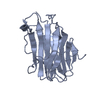

 Links
Links Assembly
Assembly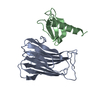
 Components
Components Ectromelia virus / Gene: crmD / Production host:
Ectromelia virus / Gene: crmD / Production host: 
 Homo sapiens (human) / Production host:
Homo sapiens (human) / Production host: 
 X-RAY DIFFRACTION / Number of used crystals: 1
X-RAY DIFFRACTION / Number of used crystals: 1  Sample preparation
Sample preparation SYNCHROTRON / Site:
SYNCHROTRON / Site:  SSRF
SSRF  / Beamline: BL17U / Wavelength: 0.97 Å
/ Beamline: BL17U / Wavelength: 0.97 Å Processing
Processing MOLECULAR REPLACEMENT
MOLECULAR REPLACEMENT Movie
Movie Controller
Controller



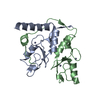


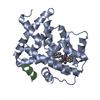
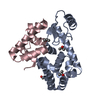

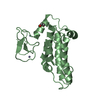
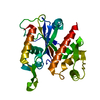
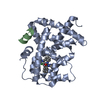
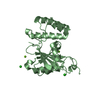
 PDBj
PDBj


